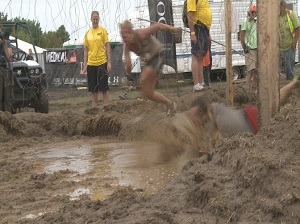In August 2018, Public Health England (PHE) was made aware of five probable cases of Shiga toxin‐producing Escherichia coli (STEC) O157:H7 among individuals reporting participation in a mud‐based obstacle race. An additional four cases, identified via routine whole‐genome sequencing, were subsequently linked to the same event. Two of the nine cases were due to secondary household transmission.
 Despite an agreement between the event organizers and the local authority, to ensure that all livestock were removed from the site 28 days before the event, sheep were observed grazing on some of the routes taken by the runners 2 days prior to the race taking place. A retrospective review of incidents reported to PHE between 2015 and 2018 identified 41 cases of gastroenteritis associated with muddy assault course events. Of these, 25 cases were due to infection with STEC O157:H7, of which all but one were associated with outbreaks.
Despite an agreement between the event organizers and the local authority, to ensure that all livestock were removed from the site 28 days before the event, sheep were observed grazing on some of the routes taken by the runners 2 days prior to the race taking place. A retrospective review of incidents reported to PHE between 2015 and 2018 identified 41 cases of gastroenteritis associated with muddy assault course events. Of these, 25 cases were due to infection with STEC O157:H7, of which all but one were associated with outbreaks.
Due to the environment in which such events take place, it is impossible to entirely remove the risk of exposure to potentially pathogenic zoonoses. However, race organizers should ensure that livestock are removed from the course 28 days before the event. They should also ensure that participants are made aware of the risk of contracting gastrointestinal disease from the environment, and to stress the importance of hand hygiene post‐event and the risk of secondary transmission, particularly to children who are at risk of developing haemolytic uraemic syndrome.
An outbreak of shiga toxin-producing Escherichia coli O157:H7 linked to a mud-based obstacle course, England, August 2018
Zoonoses and Public Health
Alexander Sharp, Elizabeth Smout, Lisa Byrne, Rebecca Greenwood, Richard Abdoollah, Charlotte Hutchinson, Claire Jenkins, Nachi Arunachalam, Simon Padfield, Gareth Hughes, Mike Gent



